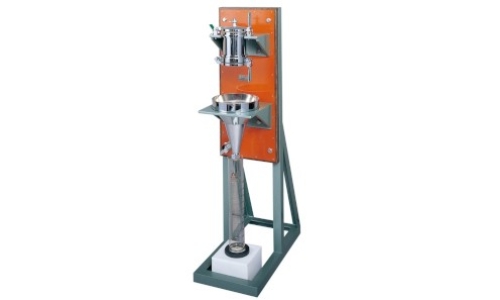Beating pulp fiber provides effects such as fibrillation, generation of fines, reduction of fiber in length and volume, etc. depending on the beating method and time. As a result, various physical characteristics of the paper are affected in addition to the fluidity and drainage performance on wire cloth. Beating has a significant role in the paper manufacturing process, and the resulting drainage performance needs to be evaluated. Some of commonly used evaluation methods involve use of a Canadian standard tester and Schopper-Riegler freeness tester. In those methods, a certain amount of suspension liquid is filtered through a screen plate or wire cloth, and the white water is sampled from the funnel side tube, whose amount is measured and used to determine the beatability. This tester uses a screen plate for filtering suspension liquid and is provided with a cock to be operated to start drainage. Thus, it eliminates differences in the result when different operators are involved, yielding high accuracy.
Translation provided by Google
Canadian Standard Freeness Tester - OpTest
Home/Pulp and Fibrous Materials/Canadian Standard Freeness Tester
Canadian Standard Freeness Tester
| Product Name | Canadian Standard Freeness Tester |
| Product Code | KRK-2580-A |
| Standards/Methods | JIS P-8121-2012, TAPPI T 227 om-94, ISO 5267/2 |
| Manufacturer | Kumagai Riki Kogyo Co., Ltd. ( KRK ) |
| Availability from OpTest | Exclusive to Canada, USA, and Mexico |
Specimen: 3g O.D.
Concentration: 0.3%
Standard Accessory: one screen plate
Optional: one measuring cylinder 1000cc, mounting support
Outer Dimensions: main unit 300 x 300 x 730mm (not including the support)
Instrument Weight: 28kg


